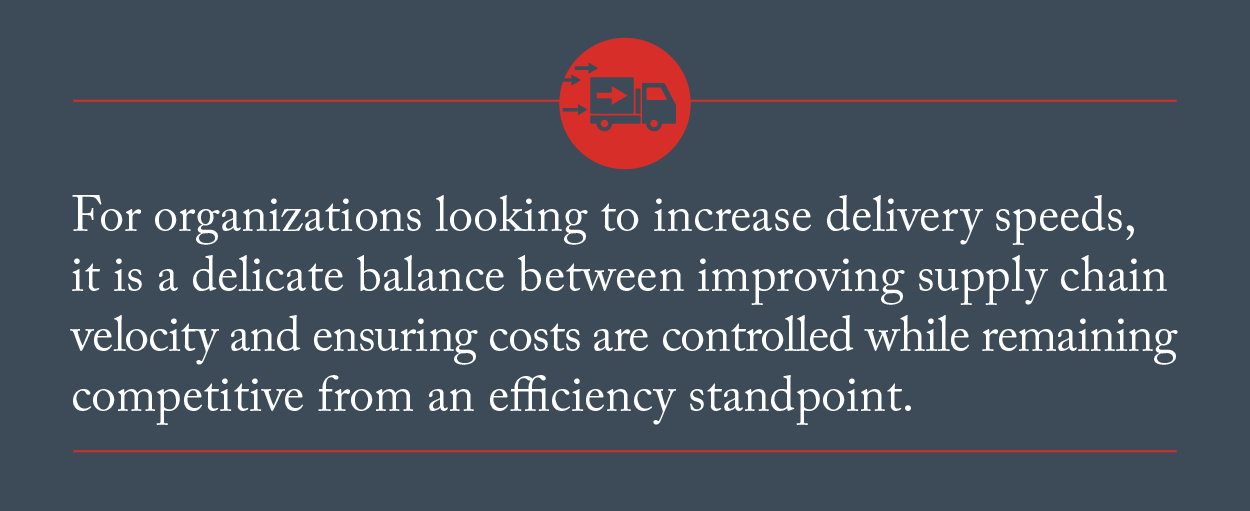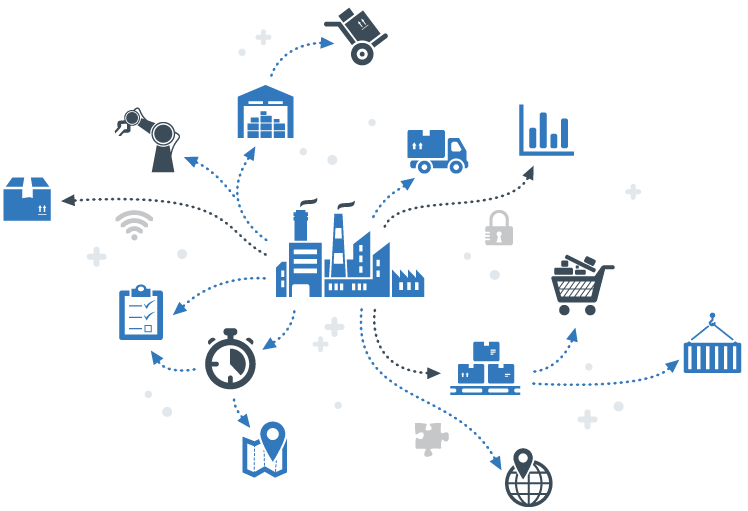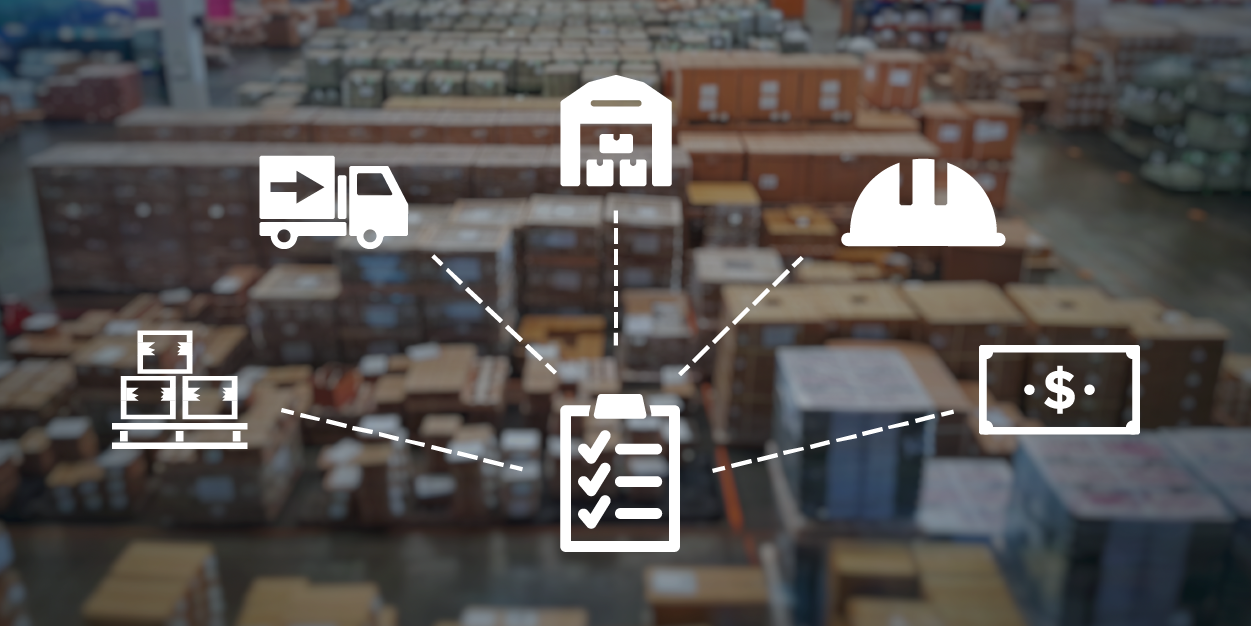For supply chain leaders, Amazon has created the standard for two-day shipping, putting pressure on the rest of the industry to speed up delivery. To compete, companies must evolve their logistic strategy to meet consumers expectations for fast, free shipping, particularly when it comes to retail. Amazon has created a high service supply chain to offer an easy, hassle-free, and automated experience for consumers, but in doing so, they have increasingly become inefficient. For organizations looking to increase delivery speeds, it is a delicate balance between improving supply chain velocity and ensuring costs are controlled while remaining competitive from an efficiency standpoint.

The Challenge
Businesses need to have multiple warehouses to fulfill orders quickly and successfully offer two-day shipping windows. For smaller or mid-size players, operating several locations to hit target markets presents challenges for the supply chain.
Managing and planning inventory across many different nodes is obviously logistically complex. Thus, determining what inventory gets sent to which warehouse, and how much, requires a high level of sophistication in the supply chain. Logistics teams must analyze, plan, and manage more effectively to make purchasing decisions across several locations.
Furthermore, the capital requirements to operate a network of warehouses can be very high. When there is an increase in the number of warehouses, organizations will also need to invest in more inventory. For example, to increase from one warehouse to four, your organization would need to double its capital investment in inventory stock to meet demands.

Strategies for Improvement
To successfully meet consumer expectations and velocity targets without overspending, supply chain leaders must carefully consider network design, optimization opportunities, data collection, and potential technologies. When looking to ramp up supply chain velocity, there are several areas that can be examined to increase efficiency, including:
Designing your network for speed
Your supply chain should be built to support the organization’s velocity goal. Increasing the number of warehouses presents new design considerations like how much safety stock will be needed at different locations? What is the right inventory level for each warehouse? Accounting for inventory requirements in different regions will guide how many nodes your network truly needs.
When expanding the number of warehouses in your network, the goal is to reach a higher percentage of the population using ground services, which is critical to offering faster shipping at a competitive rate. The ability to ship via ground transport enables businesses to meet the two-day shipping window at an economical cost, and an increase in nodes means that your organization can provide two-day shipping to more consumers.

Optimizing your network for velocity
Within your network, it is pertinent to efficiently plan inventory across locations. Consumers in different regions will have diverse needs, which will mean that your warehouses have specific demands for inventory. Efficiently stocking each warehouse according to the demand in each area will allow your business to fulfill orders quickly without overspending on shipping costs. Given the large capital investment in inventory, ensuring the right warehouses are receiving the proper levels of inventory is critical to controlling purchasing costs.Inventory optimization helps you to identify your holistic inventory strategy to determine the correct inventory levels for each warehouse, preventing stock-outs or over capacity. Consider areas that impact inventory like sourcing, production, warehousing, and transportation to gain a better understanding and choose the right safety stock targets.

Leveraging business intelligence for efficiency
Make sure to tap into the wealth of insights your internal information provides. Pulling data from several sources like parcel, transportation, warehouse, labor, and payroll departments creates a big data scenario, empowering you to get better information and make smarter decisions. Notably, integrating data from several sources provides a comprehensive view so you can more accurately plan inventory in your network. With business intelligence integrated into your planning, you can have more confidence that your network is not creating bottlenecks that slow down delivery and increase costs.

Utilizing labor wisely
Labor management is critical to operations, as it provides data on where time is being spent, allowing you to focus on removing non-productive time and instead increase operational utilization/efficiency to reduce overall operating costs. Through an integrated labor management system (LMS) you have real-time associate and process performance visibility, enabling you to make proactive decisions to ensure you are meeting customer demands.
 LMS provides associate and process performance feedback that is critical for coaching and continuous improvement. Specifically, worker efficiency data can be used to see if employees are picking and processing an order at a standard rate, providing information on whether employees need to improve their job performance to meet speed requirements.
LMS provides associate and process performance feedback that is critical for coaching and continuous improvement. Specifically, worker efficiency data can be used to see if employees are picking and processing an order at a standard rate, providing information on whether employees need to improve their job performance to meet speed requirements.
With the unemployment rate on the downslope, it becomes more challenging to retain top talent. Therefore, it is important to have a performance-based incentive program allowing top performers an opportunity to earn more money while benefiting the company/customer, creating a “win-win” scenario.
Considering technology solutions carefully
Though integrating technology can be an attractive option for improving velocity, you should evaluate solutions to make sure the investment makes sense long term. With technologies like automation and robotics, the more you focus on the efficiency of the solution, the more specific the application becomes. While technology can make an immediate impact on improving processes today, you must consider how your business and the industry will evolve. To avoid throwing away capital, you need an agile, flexible, and scalable solution that can change as your organization’s objectives transform over time.

With consumer expectations for speedy deliveries only growing, it is more important than ever to ensure your supply chain can meet the standards for velocity. Outsourcing can make it easier to increase delivery speeds at a lower cost. 3PLs already have operating locations, eliminating the need to create and manage your own warehouse networks. An outsourced partner also has the business intelligence to leverage your data to make optimal inventory decisions and has experience with future-focused technology implementations. While the need for speed cannot be ignored, companies that take a calculated approach to velocity will find the most success without overextending their budgets.
